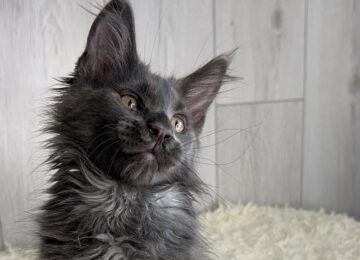Competitive dog grooming, a unique and creative arena, has evolved significantly over the years, becoming a blend of art, skill, and competition. Its origins can be traced back to the advancements in dog grooming practices, particularly in the 20th century.
The introduction of modern grooming tools like electric clippers and dryers revolutionized the field, enabling groomers to achieve more intricate and precise styles.
The Rise of Dog Shows and Grooming Artistry
The rise of dog shows played a crucial role in the evolution of competitive dog grooming. As these shows gained popularity, they became more than just a venue to showcase different breeds; they transformed into platforms where grooming became an art form.
Groomers began to experiment with innovative techniques, showcasing their skills in styling and sculpting the fur of various breeds, especially those with longer coats like poodles and bichons.
This era also saw a growing appreciation for the aesthetic aspects of dog grooming since the time breeding puppies became prevalent. Groomers started to explore creative designs and patterns, moving beyond traditional grooming standards to include artistic elements that highlighted the unique features of each breed. This artistic approach not only enhanced the visual appeal of the dogs but also showcased the groomers’ technical prowess and creativity.
Furthermore, dog shows became breeding grounds for new grooming trends and styles, influencing the grooming practices beyond the show ring. The competitive environment pushed groomers to continually refine their skills and innovate, contributing to the overall advancement of grooming techniques and tools.
The increasing attention to detail and the pursuit of excellence in grooming at dog shows significantly raised the bar for the industry. It led to a heightened demand for professional groomers who not only understood the functional aspects of grooming but also had an artistic eye to transform pets into show-worthy specimens.
This period marked the beginning of a new era in dog grooming, where skill, creativity, and competition converged, setting the stage for the modern competitive dog grooming scene.
Pioneering Organizations in Dog Grooming
Key organizations have played pivotal roles in shaping this industry. In 1969, Robert Reynolds founded the National Dog Groomers Association of America with the aim of uniting pet groomers through membership and communication. His legacy continues through his son, Jeffrey Reynolds.
The International Judges Association (IJA), founded by John Nash, further contributed to the development of the field by setting standards and providing a platform for competition and education.
Influential Figures and Growing Professionalism
GroomTeam USA, with influential figures like Lynne Carver and Liz Paul, emerged as a significant organization, setting many of the standards still upheld in competitive grooming today. These individuals, with their backgrounds in dog shows, brought a level of expertise and style to the competitive grooming arena.
Expansion and Educational Advancements in Grooming
The professional landscape of dog grooming expanded in the post-World War II era, especially in the United States, where the pet population grew to equal or even surpass the human population. This growth led to an increased demand for skilled groomers, elevating the profession’s status and creating more job opportunities.
Educational advancements followed suit, with vocational grooming schools appearing in the 1960s. Influential figures like Sam Kohl and John Nash played crucial roles in grooming education, and organizations like Barkleigh provided vital communication platforms through magazines, conferences, and social media.
The Emergence of Competitive Grooming and Industry Support
The 1970s and 80s marked a significant turning point in the dog grooming industry with the emergence of competitive grooming. This period was characterized by a concerted effort towards professional organizing and training within the grooming community.
Visionary groomers like Pam Lauritzen played a pivotal role in this movement, advocating for higher standards and more structured training.
This era also saw increased industry support, particularly from manufacturers of grooming equipment and supplies. Their involvement was crucial in organizing and promoting educational opportunities for groomers, elevating the profession to new heights.
The collaboration between these manufacturers and the grooming community was a key factor in the development and popularization of competitive grooming.
One of the most significant outcomes of this period was the establishment of competitions that led to the selection of teams like Groom Team USA for international contests. These competitions provided a platform for groomers to showcase their skills and compete at a higher level. They were made possible not only by the hard work and dedication of volunteer groomers but also by substantial support from the grooming industry.
This synergy between grooming professionals and industry stakeholders created a robust framework for the growth of competitive grooming. It catalyzed the development of new grooming techniques, styles, and standards, which continue to evolve and inspire groomers worldwide.
The history and progress made during this time are chronicled by industry leaders like Teri DiMarino and Shirlee Kalstone, part of the collective Professional Groomers History Project, ensuring that the contributions of these early pioneers are recognized and remembered.
Biggest Dog Grooming Competitions in the World
The world of competitive dog grooming is not just about showcasing grooming skills, but also about bringing together a community of professionals who share a passion for pet care and aesthetics. Some of the largest and most prestigious grooming competitions globally are:
Groom Expo in Hershey, Pennsylvania
This is considered the world’s largest grooming show. Held annually in September at the Hershey Lodge and Convention Center, the Groom Expo welcomes thousands of pet professionals from around the globe. It offers a plethora of activities, including dozens of educational seminars, various grooming competitions, and many networking events.
SuperZoo Grooming Competition in Las Vegas
Known for its grand scale and a wide array of categories, the SuperZoo Grooming Competition attracts over 1,000 competitors each year. It features contests in breed profile, creative styling, poodle grooming, and hand-stripping, catering to groomers of all experience levels.
With over $35,000 in winnings at stake, SuperZoo stands as one of the industry’s most prestigious stages for showcasing grooming creativity and talent.
Conclusion
Competitive dog grooming exists as a testament to the evolution of grooming from a practical necessity to an art form and a sport, driven by technological advancements, increased pet ownership, and the dedication of industry pioneers and organizations.












